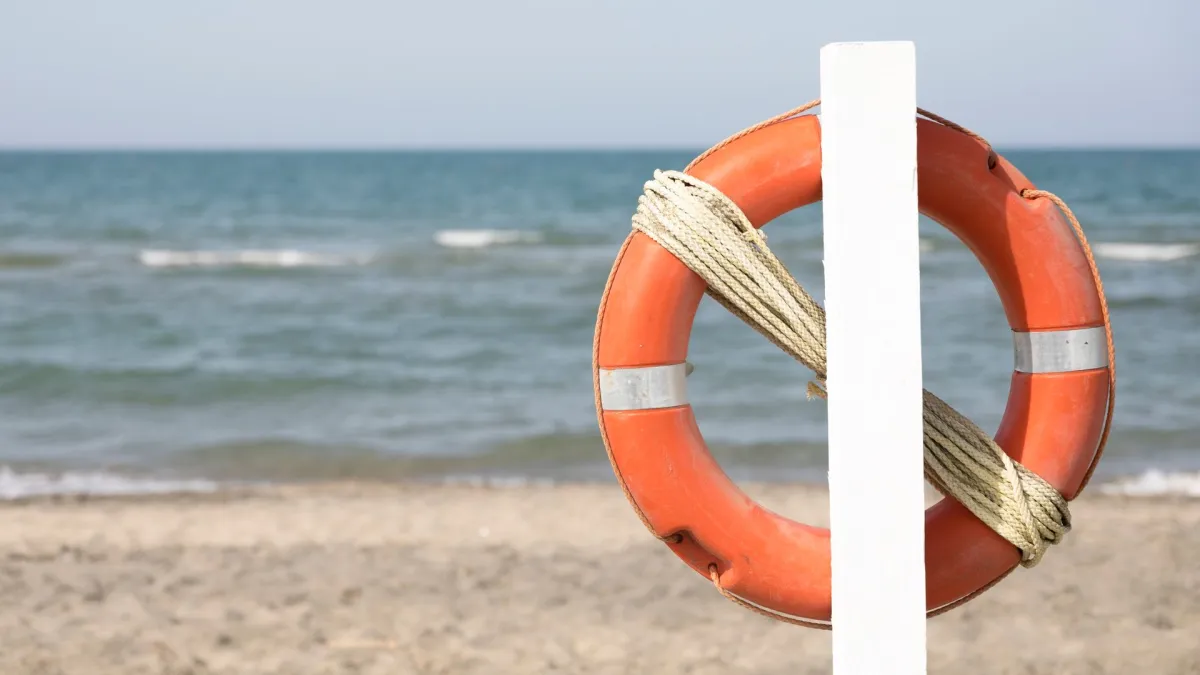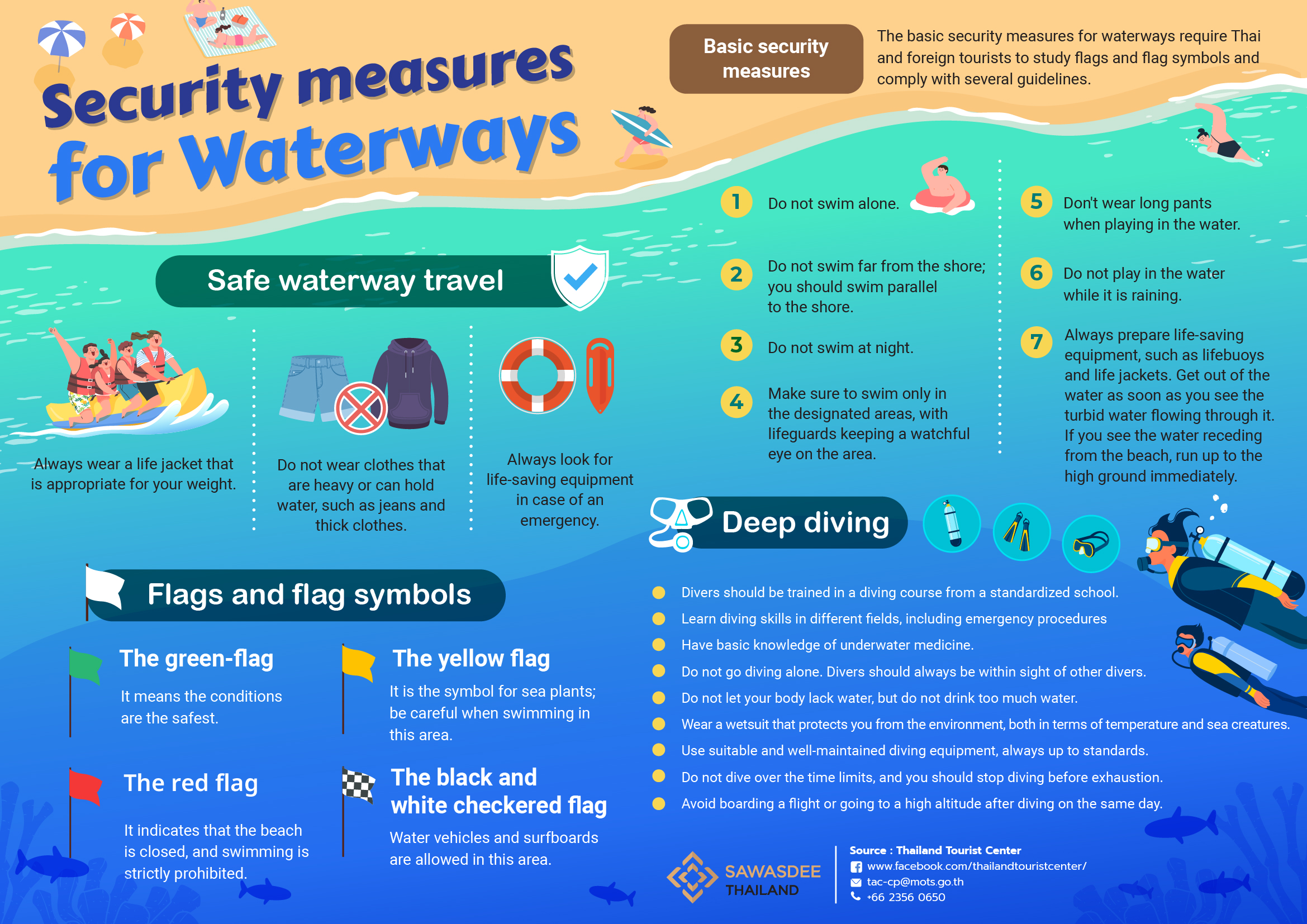
Safety measures on waterways and beaches
Thailand is a popular tourist destination, and it's essential both to take measures to prevent damage to water resources due to tourism and to protect people from hazards on the water. This is especially important for foreign tourists who enjoy traveling on Thai seas and for those who like to engage in watersports. Therefore, in terms of safety, let's first examine water safety measures.
The Division of Standards and Supervision of Tourist Safety has created a manual to train volunteers and help marine tourists meet water safety standards by organizing training activities to train personnel and building a network to help marine tourists in Thailand.
The basic security measures for waterways require Thai and foreign tourists to study flags and flag symbols and comply with the following:
Safety of waterway travel
Always wear a life jacket that is appropriate for your weight when traveling by water. Do not wear clothes that are heavy or can soak up a lot of water, such as jeans and thick clothes, and always look for life-saving equipment so that you’ll know where it is in case of an emergency.
Deep diving
Divers should be trained in a diving course from a standardized school, have diving skills in different fields, including emergency procedures and basic knowledge of underwater medicine, and not go diving alone. Divers should also always be within sight of other divers. Do not let the body lack water but do not drink too much water. Wear a wetsuit that protects the environment, both in terms of temperature and sea creatures. Use a set of qualified and well-maintained diving equipment according to standards. Do not dive over the time limit, and you should stop diving before exhaustion. Avoid boarding flights or going to a high altitude after diving on the same day.
Flags and flag symbols
Green-flag areas are considered the safest. The yellow flag is the symbol of sea plants; be careful when swimming in this area. A red flag indicates that the beach is closed, and swimming is strictly prohibited. Moreover, there is a black and white checkered flag for zones where only water craft such as kayaks or surfboards are allowed, no swimmers.
